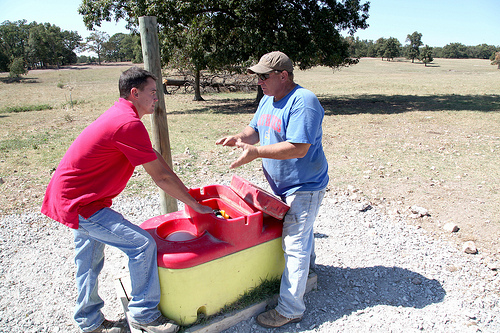There are more than 160,000 public water systems providing water to almost all Americans at some time in their lives. Millions of Americans receive high quality drinking water every day from their public water systems. But access to quality drinking water cannot be taken for granted.
Like many small towns in rural America, the Town of Otter Creek in Levy County, Florida, strives to provide its residents with safe, high quality water. Unfortunately, for this community of under 150 people, poor quality drinking water is a reality. With high levels of trihalomethanes and iron in the water supply, town officials faced a potential health hazard and a lack of financial resources to address the problem. The Town was issued a Consent Order by the Florida Department of Environmental Protection to find a solution for the water quality issue. Given the town’s median household income of $18,000, and limited town resources, town officials sought assistance to develop a plan toward remedying the situation. Read more »
Many communities in remote rural Alaska are only accessible by plane or boat and essentially inaccessible during the long, hard winters. They lag far behind the lower 48 states in having safe and dependable drinking water and suitable waste disposal systems available. The Rural Alaska Village Grant (RAVG) program supports the development and construction of water and wastewater systems to correct dire health and sanitation conditions in those villages. I had the recent opportunity to accompany USDA Water and Environmental Program RAVG Manager Tasha Deardorff and other program partners on site visits of two such remote rural communities to check the status of current projects.
It’s nearly 400 miles from Anchorage to Bethel, the regional hub. Our first destination from Bethel was the remote Native village of Toksook Bay some 114 miles away. We were greeted by a resident who transported us via four-wheeler (all terain vehicle) to the city office. Read more »
In the wake of the 2012 summer fires, Colorado’s most precious natural resource, water, is a top priority for state, municipal, and federal agencies. Denver Water and the U.S. Forest Service are leaders in addressing water issues and growing concerns over watershed health. Just under two years ago, both partnered to combine approximately $33 million in funding to target specific areas for restoration and mitigation work to reduce potential fire impact in key watersheds that supply water to Front Range communities.
Two new projects of the Denver Water partnership are underway on the White River National Forest on the Dillon Ranger District near Breckenridge, Colo. These projects target “zones of concern” identified by the Blue River Watershed Assessment in collaboration with the Forest Service and Denver Water. Cary Green, the East Zone timber management assistant said, “The partnership is hugely beneficial to cost-sharing vegetative treatments in the Blue River Watershed. Together, we are able to improve forest health, forest vegetative diversity, and achieve substantial fuels reduction in and around high priority watersheds.” Read more »

Where no clean soil was encountered under the waste pile, removal crew cleaned the site down to within 1/2" of bedrock. USFS photo.
For over a century, toxic runoff from the Blue Ledge Mine destroyed aquatic life and fisheries in Joe Creek, a tributary to the world-famous Rogue River in Oregon. Read more »

The new box culvert and open channel to Long Island Sound, which restored fish passage and tidal flows to the salt marsh. Volunteers installed the dune grass plantings.
We have a lot to learn from nature about teamwork. In fact, natural systems prove time and again that the intricate partnerships between air, water, soil, nutrients and plant and animal species breed success. So why, whether a singular agency, organization or landowner, would we ever think that we could “fix” a problem like fish habitat degradation alone? Read more »

Mike Whitis, left, Benton County NRCS district conservationist, and Craig Oliphnant discuss the operation of Oliphnant’s new livestock watering tank.
The hot, dry Arkansas summer last year affected cattle farmers across Arkansas. But thanks to USDA’s Natural Resources Conservation Service (NRCS) and the Illinois River Sub-Basin and Eucha-Spavinaw Lake Watershed Initiative, Craig and Jay Oliphnant’s operation has been able to effectively weather the drought. Read more »



